



Next: The Access to the
Up: Metarules
Previous: Feature Matching
Examples
Figure C.2 shows a metarule for wh-movement of the subject. Among
the trees to which it have been applied are the basic trees of intransitive,
transitive and ditransitive families (including prepositional complements),
passive trees of the same families, and ergative.
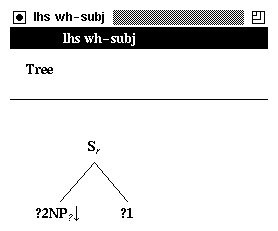 | 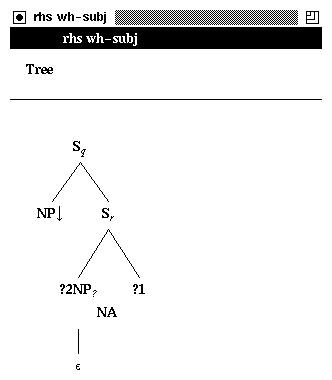 |
| lhs | rhs |
- {Metarule for wh-movement of subject
Figure C.3 shows a metarule for wh-movement of an NP in object
position. Among
the trees to which it have been applied are the basic and passive trees of
transitive and ditransitive families.
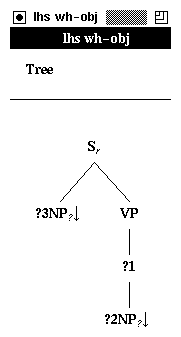 | 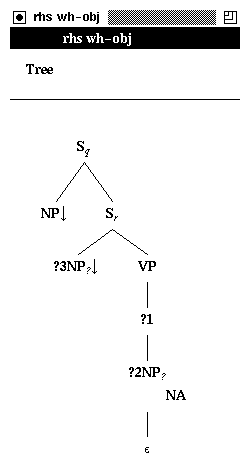 |
| lhs | rhs |
- {Metarule for wh-movement of object
Figure C.4 shows a metarule for general wh-movement of an NP. It can be
applied to generate trees with either subject or object NP
moved. Figure C.5 shows the basic tree for the family Tnx0Vnx1Pnx2 and
the three wh-trees generated by the application of the rule.
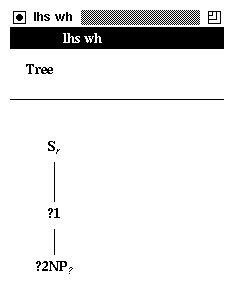 | 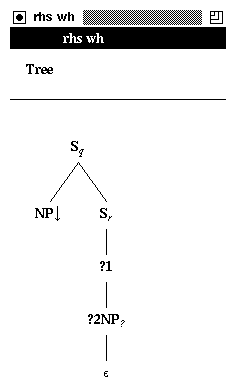 |
| lhs | rhs |
- {Metarule for general wh movement of an NP
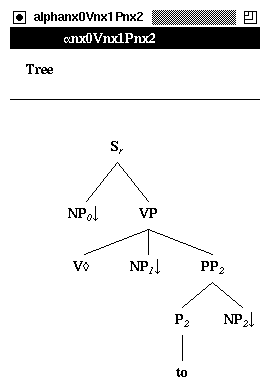 | 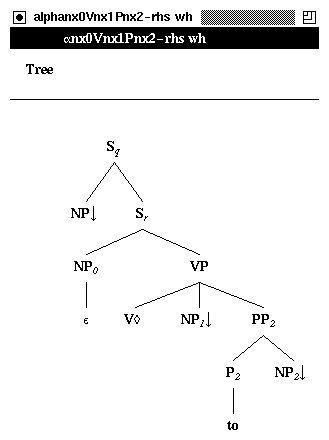 |
| Tnx0Vnx1Pnx2 | subject moved |
| | |
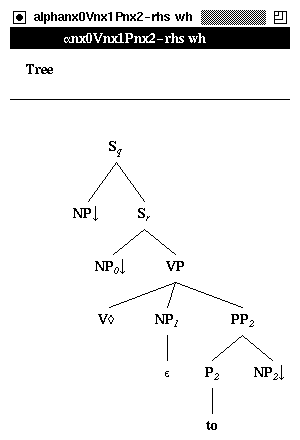 | 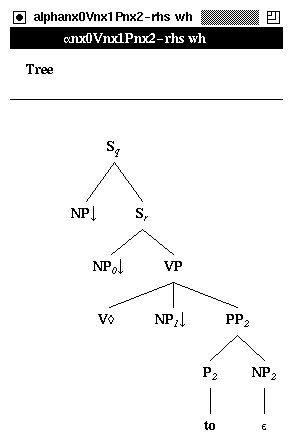 |
| NP object moved | NP object moved from PP |
- {Application of wh-movement rule to Tnx0Vnx1Pnx2




Next: The Access to the
Up: Metarules
Previous: Feature Matching
XTAG Project
http://www.cis.upenn.edu/~xtag











